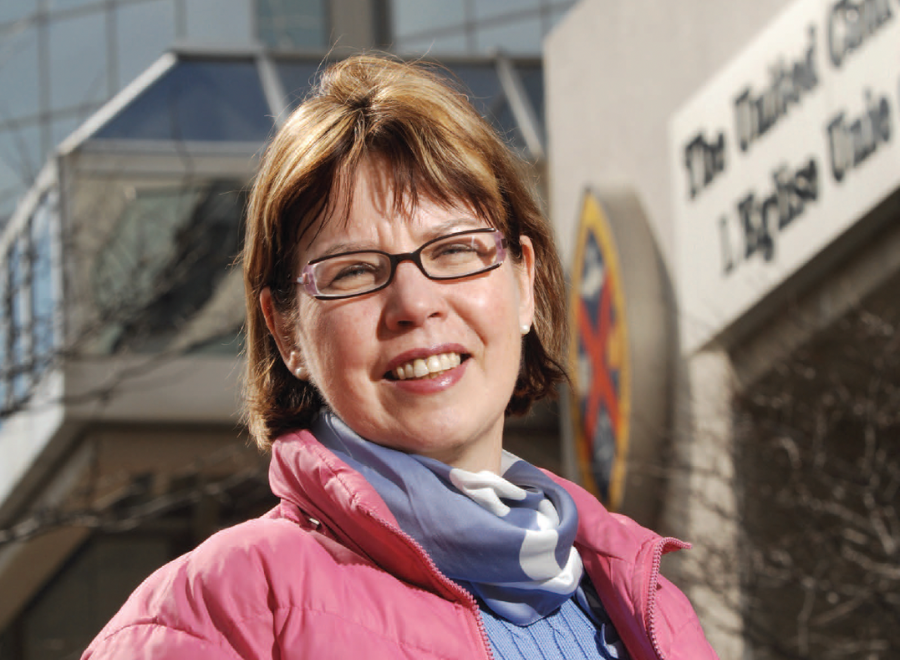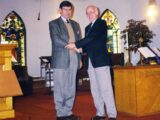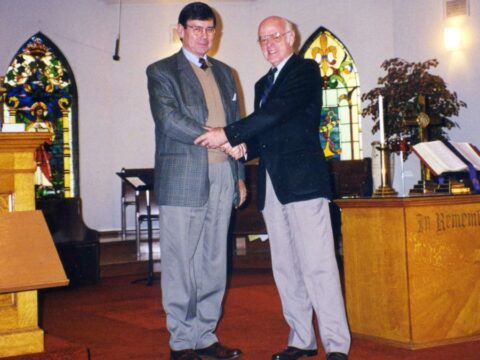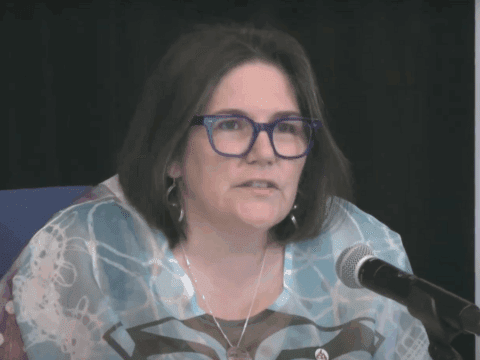The United Church’s media presence last Easter weekend ranged from one newspaper story about an iconoclastic Toronto minister whose congregation replaced “Jesus Christ” with “glorious hope” in a resurrection hymn, to another about a dramatic whip-cracking Good Friday service with mainstream Atonement theology in Truro, N.S. On the internet, the moderator’s hope-filled Easter message appeared alongside a General Council notice about the church’s unhappy residential school legacy.
The wide and sometimes bewildering variety of messages about the United Church that appear in the press should come as no surprise to a church that has weathered media storms over inclusive language, gay ordination, resurrection theology, same-sex marriage and “bobblehead Jesus” in the last couple of decades. It should also come as no surprise that a major ongoing challenge for all levels of the church is to make sure that the United Church message is not misunderstood by reporters, the general public and the people in its own pews.
You may unsubscribe from any of our newsletters at any time.
“We are a church,” says General Council general secretary Nora Sanders, “so fundamentally we have to find ways to share what challenges us and what inspires us.” A need for two-way communication distinguishes the church from secular corporate organizations, she says. So, “how do we hear from one another and how do we hear what people want to know in this information-overload world?”
To get an answer, General Council Office has done two major communication studies in the past three years. The most recent was completed last fall by staff multimedia specialist Catherine Rodd. Her report offered three scenarios. Hiring a corporate-style communications director figured into two of them but was rejected as too costly.
The third option, a working group made up of existing staff, is now in place. Led by executive minister Daniel Benson, it’s looking at the church’s internal communication — aimed at ministers and committed volunteers — and external communication aimed at the public at large.
Rodd says a “gap analysis” found that some of the most serious breakdowns in communication occur on the home front. As Benson puts it, “You’re transmitting but people are not receiving.”
The hazards of the gap between the pews and the General Council were obvious in the wake of major General Council layoffs last summer. The layoffs were a result of a long call-to-purpose process that began at the 2006 General Council and worked its way through established decision-making channels but fell off the radar of the general church membership. It took months for the senior church leadership to counter a widely held perception that the layoffs had come out of nowhere.
Redesigned a year ago, The United Church of Canada’s website, www.united-church.ca, seems to present the best vehicle for keeping the people in the pews up to date on church business. With about 5,000 pages of information, it’s certainly comprehensive.
But it’s not perfect. More than one-quarter of The United Church of Canada’s 3,500 congregations have no viable email access, suggesting they lack Internet access of any sort. Also, about half of the United Church’s preaching points are in rural areas — among the almost three-quarters of Canadian communities without high-speed Internet access.
COMMUNICATING DIRECTLY with the flock is a big challenge in itself. Communicating beyond the flock through a secular media fond of putting its own spin on church news is another challenge altogether.
A couple of cases in point.
In 1986, a Globe and Mail report from the 31st General Council in Sudbury, Ont., suggested the church had eliminated male references to God such as Father, King or Lord in its new inclusive language guidelines. The report couldn’t have been more wrong. The newspaper issued a correction, but the damage was done. Some conservative church members already uncertain about inclusive language were up in arms and stayed that way for a long time.
Two decades later, before the 2006 General Council in Thunder Bay, Ont., a Toronto Conference committee co-chair, inaccurately described by the National Post as a United Church spokesperson, made inflammatory remarks about Israel in connection with a proposal going before Council to divest from some companies doing business in the Occupied Territories.
The story threatened to damage carefully nurtured relations between Canadian Jews and the United Church.
On the eve of General Council, the church’s top official had to write an apologetic clarification letter to the newspaper, saying that the Conference committee member did not speak for The United Church of Canada. General Council eventually backed away from the divestment proposal.
During General Councils, the church goes to great lengths to get the official version of the news directly into the hands of editors and local church leaders. An authorized newsletter is produced by volunteer journalists and vetted by senior church officials before it leaves the General Council media room. In between General Councils, longtime church publicist Mary-Frances Denis emails pastoral charges the same press releases that she sends to the news services.
Rt. Rev. David Giuliano is the first moderator to make extensive use of the internet for communicating directly with church members. Last year, a public relations firm named him one of Canada’s top communicators for an open letter he delivered simultaneously to media and pastoral charges. In it, he told congregations to worry less about buildings and budgets and more about getting into the world and helping people. Giuliano also produced a candid and widely read blog while being treated for cancer last year.
“To go through something so personal and be willing to share that so openly” was “a real gift to the church,” says Denis.
In local congregations, ministers and leading volunteers are the church’s public face. An increasing number of congregations use websites, email and blogs to communicate with their membership and the public at large. For most, though, communication remains a low-tech exercise.
It can be as simple as developing a relationship with the local religion reporter. When Red Deer Lake United in Calgary celebrated its new amalgamation with Midland United this past February, the congregation’s communication chair put in a call to the Calgary Herald’s religion writer. The resulting story was upbeat but didn’t gloss over Midland United’s past split with a former minister. A few weeks later, when the reporter was drumming up an Easter story, Red Deer United was on his contact list.
Whether the story is local, national or international, whether it’s internal or external, stories about the United Church ultimately share one underlying theme, according to Nora Sanders. “One of our big messages is ‘You are welcome here, whoever you are. If you seek to follow Jesus, come and sit with us and we will do that together.’ I think that is a fundamental message.”
***
This story first appeared in The United Church Observer’s May 2008 issue with the title “New solutions to an old communication gap.”














